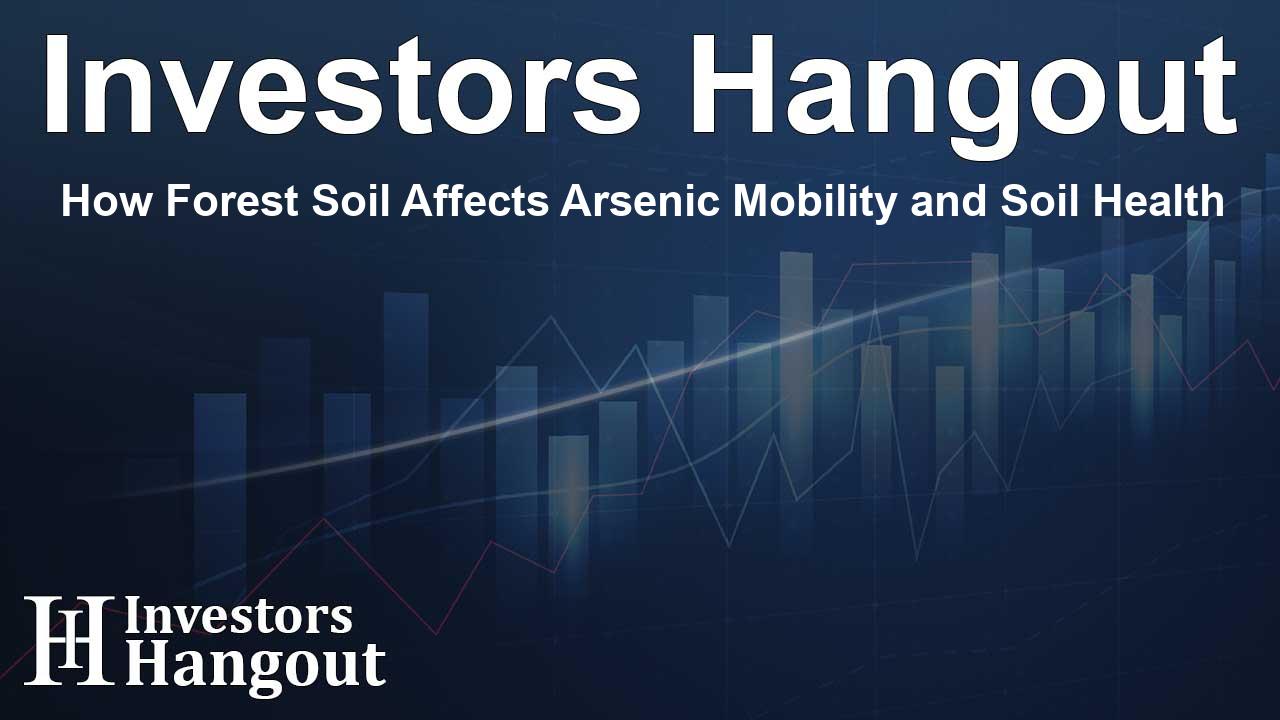How Forest Soil Affects Arsenic Mobility and Soil Health

Understanding Arsenic Contamination in Forest Soils
Arsenic contamination in forest soils poses significant ecological concerns, particularly because juvenile organisms respond more acutely to mobile arsenic than their adult counterparts. This critical issue is gaining attention from researchers around the globe, as toxic metals and metalloids from various industrial activities continue to linger as long-term environmental pollutants.
The Role of Forest Soils in Ecosystem Health
Soil serves as a fundamental component of any ecosystem, playing a vital role in nutrient cycling, water filtration, and supporting plant growth. However, forest soils, while essential for biodiversity and ecosystem health, are particularly at risk from contaminants like arsenic. This naturally occurring metalloid can become problematic when mobilized through activities such as mining, where abandoned gold mines become significant sources of arsenic-rich pollutants.
Research Insights from Pusan National University
In a recent study, researchers from Pusan National University, led by Professor Yun-Sik Lee, embarked on a thorough examination of how arsenic interacts with diverse forest soils. The primary goal was to explore how these interactions affect the toxicity of arsenic to soil-dwelling organisms. Prof. Lee noted, "Our goal was to determine how soil properties affect arsenic binding, mobility, and bioavailability, and how these factors impact the survival and reproduction of the springtail Allonychiurus kimi (A. kimi), an important indicator of soil health." The research was published in a notable scientific journal.
Investigation of Soil Properties
Researchers collected four uncontaminated forest soil samples to assess their physicochemical properties. Critical factors analyzed included pH levels, cation exchange capacity (CEC), phosphorus content, organic matter, clay content, and total arsenic present in the soils. To simulate real environmental conditions, soil samples were spiked with arsenic and aged under specific wet-dry cycles. This innovative approach allowed the team to monitor arsenic's behavior across varying conditions.
Arsenic Behavior and Toxicity Assessment
Utilizing the Wenzel sequential extraction method, arsenic was categorized into different fractions based on its mobility. Findings indicated that newly introduced arsenic primarily accumulated in the more mobile fractions, making it bioavailable to organisms inhabiting these soils. Prof. Lee highlighted that even under the same total arsenic concentration, variations in contamination levels and biotoxicity were profoundly influenced by soil properties. Factors such as CEC, phosphorus, and aluminum oxides played substantial roles in determining arsenic binding and mobility.
Implications for Ecotoxicology and Ecosystem Management
The research findings underscore the importance of understanding arsenic's bioavailability and toxicity variability in forest soils. Prof. Lee emphasized, "The study highlights the need for soil-specific evaluations of arsenic's impact rather than relying solely on total concentrations." This critical understanding allows for better-targeted management strategies aimed at reducing ecological risks associated with arsenic contamination.
Key Takeaways for Soil Management
As the research concludes, it underscores that the behavior of arsenic within forest soils is strongly influenced by specific soil properties. The study provides vital insights essential for minimizing contamination risks. Highlighting the differential sensitivity of life stages, especially in juvenile organisms, offers a stronger foundation for developing effective remediation strategies and guiding ecosystem management practices that safeguard biodiversity.
Frequently Asked Questions
What is the focus of the research conducted by Pusan National University?
The research investigates how forest soil properties influence arsenic's mobility and toxicity to soil organisms, emphasizing the impacts on both juvenile and adult organisms.
Why is arsenic mobility in forest soils a concern?
Arsenic mobility poses significant risks to soil health and biodiversity as it can bioaccumulate in soil organisms, leading to adverse ecological effects.
What are the crucial factors affecting arsenic behavior in soils?
Factors such as pH, cation exchange capacity (CEC), phosphorus content, and the presence of metal oxides are pivotal in determining arsenic binding and mobility.
What species was used as an indicator in the study?
The springtail Allonychiurus kimi (A. kimi) was utilized as an indicator species for assessing the impact of arsenic on soil health.
What implications do the findings have for environmental management?
The findings suggest that soil-specific assessments of arsenic bioavailability are necessary to develop targeted management strategies for ecosystems at risk of contamination.
About The Author
Contact Owen Jenkins privately here. Or send an email with ATTN: Owen Jenkins as the subject to contact@investorshangout.com.
About Investors Hangout
Investors Hangout is a leading online stock forum for financial discussion and learning, offering a wide range of free tools and resources. It draws in traders of all levels, who exchange market knowledge, investigate trading tactics, and keep an eye on industry developments in real time. Featuring financial articles, stock message boards, quotes, charts, company profiles, and live news updates. Through cooperative learning and a wealth of informational resources, it helps users from novices creating their first portfolios to experts honing their techniques. Join Investors Hangout today: https://investorshangout.com/
The content of this article is based on factual, publicly available information and does not represent legal, financial, or investment advice. Investors Hangout does not offer financial advice, and the author is not a licensed financial advisor. Consult a qualified advisor before making any financial or investment decisions based on this article. This article should not be considered advice to purchase, sell, or hold any securities or other investments. If any of the material provided here is inaccurate, please contact us for corrections.
